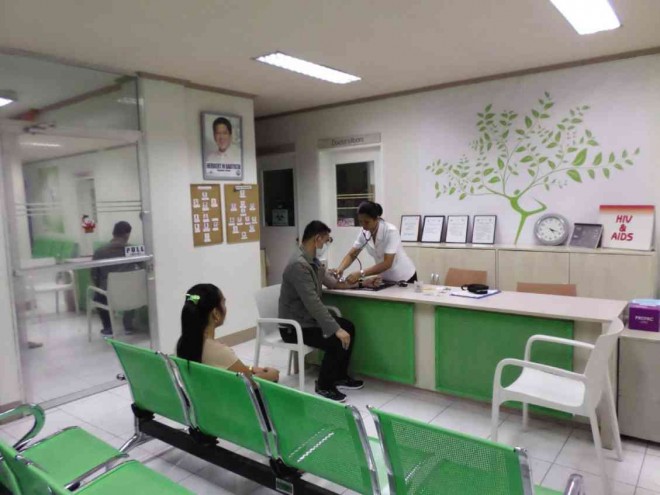QC makes it ‘more encouraging’ for men to visit HIV-AIDS clinic
A man holding up leafy branches, meant as a symbol of hope, is now a recurring figure on the newly painted walls of a special clinic in Quezon City, one that hopes that the positive, welcoming ambiance would encourage its target patients to come forward and pay a visit.
Klinika Bernardo is built for men dealing with or are deemed vulnerable to the human immunodeficiency virus (HIV). Located in Cubao behind Ramon Magsaysay High School, it is operated by the health department of Quezon City, which has the unenviable reputation of having the most number of HIV cases among local government units in the country.

THE KLINIKA Bernardo in Cubao, Quezon City, gets a makeover to give it a more welcoming feel and encourage male patients to avail of its services. CONTRIBUTED PHOTO
Showing before and after photos of Klinika, EJ Dimaano, the creative director behind the makeover, explained: “Fresh green is a symbol of hope and new beginnings.”
“We wanted to incorporate it in our design so the entire community will feel warmer, [the mood here] more uplifting and more encouraging,”
Dimaano said in a press conference Friday.
Hoping to curb the incidence of HIV and acquired immune deficiency syndrome (AIDS) in the city, the clinic was renovated to make it more conducive and encourage men to avail themselves of free testing, treatment and other support services provided by the facility.
Article continues after this advertisementThe clinic’s look was improved by production designer and HIV testing advocate Butch Garcia, with the help of the Department of Health (DOH) and United States Agency for International Development (USAID), Dimaano said.
Article continues after this advertisement“When you look at the clinic, Wow! It doesn’t look like a government facility. And that is what we want,” Mayor Herbert Bautista said at the press conference, which also announced the signing of a new DOH-USAID agreement yesterday to step up the campaign against HIV and AIDS in the city.
Records show that 77 percent of new HIV and AIDS cases in the country occur in the National Capital Region, with the most number of cases found in Quezon City.
According to Health Assistant Secretary Paulyn Ubial, the most number of reported HIV/AIDS cases were concentrated in three highly urbanized areas: Greater Metro Manila (which includes parts of Rizal, Cavite and Bulacan provinces), Cebu and Davao provinces.
The rate of increase in the number of new HIV cases has also jumped alarmingly: From 1 new case every three days in 2000, to “one new case every hour and 15 minutes, or 17 new cases in a day,” Ubial added.
“While the Philippines has a low prevalence in 2013, the latest update from the National Epidemiology Center in October 2014 showed that there are now 21,536 Filipinos diagnosed with HIV and AIDS since 1984,” she said.
“Filipino males are predominantly infected, representing 90 percent of the cases,” Ubial said.
Bautista stressed that “we are not condemning people afflicted with HIV but actually reminding them that there is an institution that will take care of their needs.”
For Vice Mayor Joy Belmonte, the first way to solve the problem is to recognize its presence: “I think the problem with other local government units is that they deny that the problem exists because it is something that they are ashamed of.”
“Here in Quezon City, because we recognize the problem, we allocate funds for it, look for specialists to work with us and partner actively with various organizations—government and nongovernment—to ensure that this problem is solved,” Belmonte added.